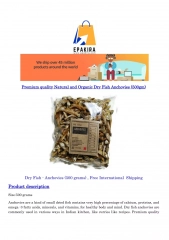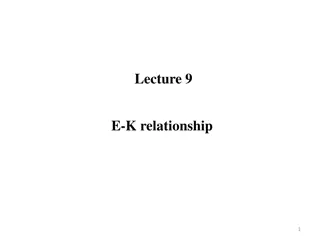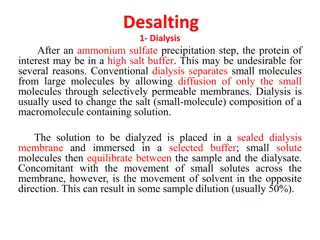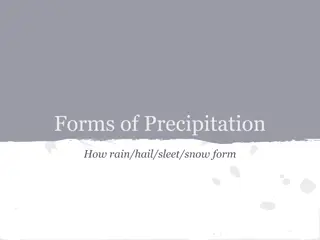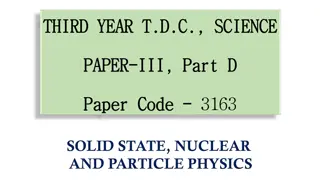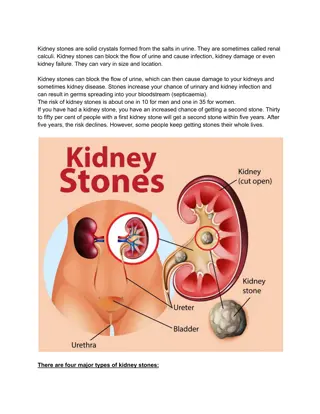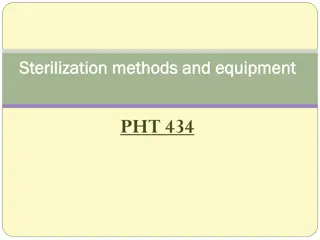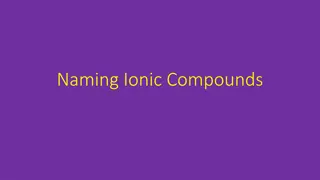
Crystallization of Salts: A Deeper Dive
Explore the properties of dry salts, observe the color changes in copper sulfate crystals, and learn about the hydration and chemical formulas of salts like gypsum. Discover the transformation of gypsum into calcium sulfate hemihydrate upon heating, all in a comprehensive guide.
Download Presentation

Please find below an Image/Link to download the presentation.
The content on the website is provided AS IS for your information and personal use only. It may not be sold, licensed, or shared on other websites without obtaining consent from the author. If you encounter any issues during the download, it is possible that the publisher has removed the file from their server.
You are allowed to download the files provided on this website for personal or commercial use, subject to the condition that they are used lawfully. All files are the property of their respective owners.
The content on the website is provided AS IS for your information and personal use only. It may not be sold, licensed, or shared on other websites without obtaining consent from the author.
E N D
Presentation Transcript
Are the Crystals of Salts really Dry? Are the Crystals of Salts really Dry?
Heat boiling What heating? Do Where Add sulphate What Is Is the Heat a a few boiling tube What is is the heating? Do you Where have Add 2 2- -3 3 drops sulphate obtained What do the blue few crystals tube. . the colour crystals of of copper copper sulphate sulphate in in a a dry dry colour of of the the copper copper sulphate sulphate after after you notice have these drops of obtained after do you blue colour notice water these come of water water droplets come from? water on after heating you observe? colour of droplets in from? on the heating. . in the the boiling boiling tube? tube? the sample sample of of copper copper observe? of copper copper sulphate sulphate restored? restored?
Copper dry Copper sulphate dry contain sulphate crystals contain water crystals which water of which seem crytallization. . seem to to be be of crytallization CuSO Penta CuSO4 4. .5 5H H2 2O O heat Penta Hydrated heat- ---- sulphate --- CuSO white colour CuSO4 4 + + 5 5H H2 2O O colour Hydrated copper copper sulphate white When removed If If we you reappears When we removed and we moisten you will reappears. . we heat and the moisten the will find heat the the salt the crystals find that the crystals, salt turns crystals again that blue crystals, this turns white again with blue colour this water white. . with water colour of water is is water, , crystals of the the crystals
It It is is the present Five formula Chemical sulphate Now whether wet the fixed in one water molecules formula unit Chemical sulphate is is Cu fixed number one formula molecules are unit of formula Cu SO number of formula unit of water unit of are present sulphate. . for water molecules of a a salt present in molecules present in Five water salt. . in one one of copper formula SO4 4. . 5 5H H2 2O O. . copper sulphate for hydrated hydrated copper copper Now we whether the wet. . we would the molecule would be be able molecule of able to to answer of Na answer the Na2 2CO the question CO3 3. .10 question 10H H2 2O O is is
One water One other water of other salt, of crystallisation salt, which crystallisation is is gypsum which possesses gypsum. . possesses It It has water It It has has two water of has the two water of cyrstallisation the formula water molecules cyrstallisation. . formula CaSO molecules as as CaSO4 4. .2 2H H2 2O O. . Let us look into the use of this salt. Let us look into the use of this salt.
On heating gypsum at 373 K, it loses water molecules and becomes calcium sulphate hemihydrate This is called Plaster of Paris, the substance which doctors use as plaster for supporting fractured bones in the right position. Plaster of Paris is a white powder and on mixing with water, it changes to gypsum once again giving a hard solid mass.
Note that only half a water molecule is shown to be attached as water of crystallization. How can you get half a water molecule? It is written in this form because two formula units of CaSO4 share one molecule of water. Plaster of Paris is used for making toys, materials for decoration and for making surfaces smooth.
Plaster of Paris gypsum or calcium sulphate dihydrate to about 140-180 degree Celsius. When heated to such a temperature, gypsum forms Plaster of Paris. The name is derived from the large deposits of gypsum in the Montmartre hill in Paris. Plaster of Paris is obtained by heating
When plaster of it produce gypsum as shown in the following chemical reaction. When plaster of paris it produce gypsum as shown in the following chemical reaction. paris reacts with water reacts with water
FOR MORE QUERIES: YOU CAN LOG IN TO WEBSITE www.scienceeasylearning.wordpress.com YOU CAN ALSO LIKE MY FB PAGE THAT IS: KKCHAUHAN https://www.facebook.com/kkchauhanvision/





